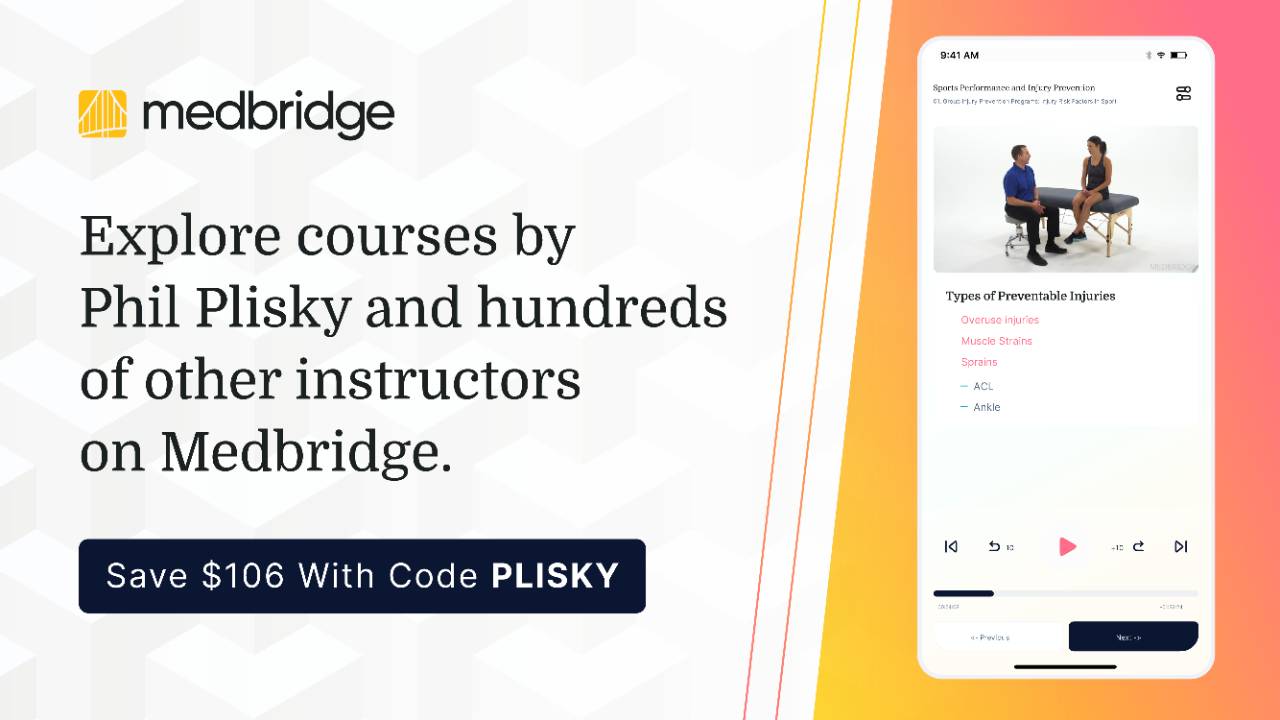A Commonly Missed Impairment After ACL Reconstruction
Let's talk about one of the most commonly missed impairments after ACL reconstruction -- loss of knee flexion range of motion. To me, this is defined as getting the ischial tuberosities all the way back to the heels (researchers define it as within 5 degrees compared to the contralateral side).
Researchers tell us that if you don't get full knee range of motion, you're more likely to re-tear the graft, as well as have long-term osteoarthritis. Here's a summary of a couple of studies:
- 780 patients at a mean of 10.5 + 4.2 years after surgery
- Normal range of motion if extension was within 2 degrees of the opposite knee including hyperextension and knee flexion was within 5 degrees
-
Logistic regression showed that abnormal knee flexion at early follow-up, abnormal knee extension at final follow-up, abnormal knee flexion at final follow-up, partial medial meniscectomy, and articular cartilage damage were significant factors related to the presence of osteoarthritis on radiographs
- Patients with a flexion deficit of 5 degrees had over two times the odds of sustaining a graft rupture (odds ratio, 2.3; P < .05)
So the bottom line is that full knee flexion ROM is really important. However, nearly all of the patients who see me from another provider at 6 months, a year or even 2 years post ACL reconstruction are limited in knee flexion, particularly in the quadruped position.
We must start working on getting this back ASAP post-operatively. One of my favorite ways to get it back is simple hands and knees rocking. We're going to have the patient come back until they feel a stretch . . . not a pain, not a pinch . . . because this is something that will come back on its own gradually if you work on it in this position consistently until the range of motion is fully restored. When you're doing the stretch, hold it about 10 seconds, back off of it, and each time try to come back a little bit farther.
Again, the real question of this is not if we should do this exercise, it's when . . . with bone patellar tendon bone graft, we've got to wait for harvest site healing. With a hamstring graft, we can do it a little bit earlier.
To see a more in depth explanation of the importance of knee flexion ROM, check out these MedBridge courses:
ACL Rehab Live Patient Case Series: Early Management and Challenges
ACL Hot Topics: Knee Extension ROM and Open-Chain Strengthening (Recorded Webinar)
Also check out our ACL Reconstruction Guidelines.
If you are interested in learning more about ACL reconstruction, check out our course series ACL Reconstruction Rehabilitation: Beyond the Protocol on MedBridge.
References
Shelbourne KD, Benner RW, Gray T. Results of Anterior Cruciate Ligament Reconstruction With Patellar Tendon Autografts: Objective Factors Associated With the Development of Osteoarthritis at 20 to 33 Years After Surgery. Am J Sports Med. 2017 Oct;45(12):2730-2738. doi: 10.1177/0363546517718827. Epub 2017 Aug 14. PMID: 28806096.
Shelbourne KD, Gray T. Minimum 10-year results after anterior cruciate ligament reconstruction: how the loss of normal knee motion compounds other factors related to the development of osteoarthritis after surgery. Am J Sports Med. 2009 Mar;37(3):471-80. doi: 10.1177/0363546508326709. Epub 2008 Dec 4. PMID: 19059893.
Webster KE, Feller JA. Clinical Tests Can Be Used to Screen for Second Anterior Cruciate Ligament Injury in Younger Patients Who Return to Sport. Orthop J Sports Med. 2019 Aug 6;7(8):2325967119863003. doi: 10.1177/2325967119863003. PMID: 31431901; PMCID: PMC6685123.










